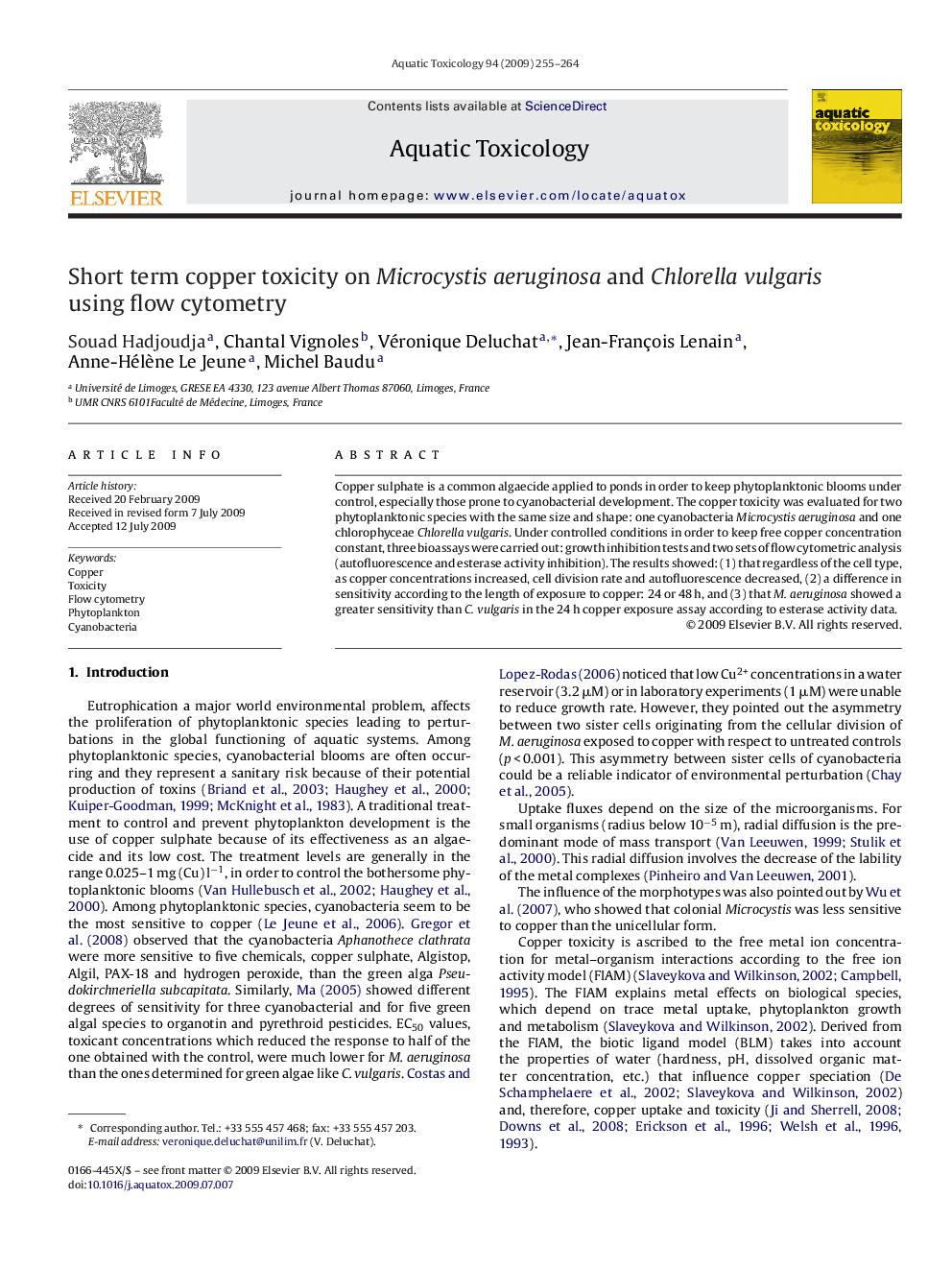| Article ID | Journal | Published Year | Pages | File Type |
|---|---|---|---|---|
| 4530598 | Aquatic Toxicology | 2009 | 10 Pages |
Copper sulphate is a common algaecide applied to ponds in order to keep phytoplanktonic blooms under control, especially those prone to cyanobacterial development. The copper toxicity was evaluated for two phytoplanktonic species with the same size and shape: one cyanobacteria Microcystis aeruginosa and one chlorophyceae Chlorella vulgaris. Under controlled conditions in order to keep free copper concentration constant, three bioassays were carried out: growth inhibition tests and two sets of flow cytometric analysis (autofluorescence and esterase activity inhibition). The results showed: (1) that regardless of the cell type, as copper concentrations increased, cell division rate and autofluorescence decreased, (2) a difference in sensitivity according to the length of exposure to copper: 24 or 48 h, and (3) that M. aeruginosa showed a greater sensitivity than C. vulgaris in the 24 h copper exposure assay according to esterase activity data.
